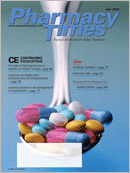WOMEN'S HEALTH WATCH
Increase in Twin Births Might Be Linked to Dairy Products
According to a new study, American women who consume dairy products are shown to be 5 times as likely to give birth to fraternal twins as women who do not. The reason may lie in the synthetic growth hormone with which many dairy cows are injected. Researchers drew this conclusion from comparing the medical records of 1042 mothers who were nondairy vegans with the records of mothers who ate dairy products on a regular basis. The findings were published in the May 2006 issue of the Journal of Reproductive Medicine.
Eating dairy products increases blood levels of insulin-like growth factor (IGF), and this hormone is associated with increased rates of multiple ovulation. The vegan mothers had IGF concentrations that were 13% lower than those of the nonvegan mothers.
The researchers say that other factors are involved in the recent increase in twin births: genetics, delayed childbirth (older mothers are more likely to have twins), and advances in assisted reproductive technology. They insist, however, that those factors do not explain the most current rise in twin births?since 1994, when recombinant bovine somatotropin was approved. In 2003, the United States had 3 sets of twins per each 100 live births, more than twice the rate of Great Britain, where the injection of growth hormones is banned.
Continuous Use of Birth Control Pill Does Not Delay Return to Menses
The results of a follow-up to a phase 3, multicenter, open-label study on the safety and contraceptive efficacy of continuous use of Wyeth's oral levonorgestrel (LNG) 90 ?g/ethinyl estradiol (EE) 20 ?g had no adverse effects on the return to menses after stopping treatment. The study involved 187 women, average age 30 years, who completed follow-up after receiving continuous-use LNG/EE for a median of 364 days.
The estimated 25th, 50th, and 75th percentiles of the time to return to menses for these women were 29, 32, and 36 days, respectively. Within 30 days after cessation of treatment, 38.5% of the women reported a return to regular menses or pregnancy. This number increased to 92% within 60 days and 99% after 90 days. The study results were presented at the Annual Meeting of the American College of Obstetricians and Gynecologists on May 8, 2006.
For Better Heart Health, Liquor Works Quicker in Women
Recent reports have touted the health benefits of alcoholic beverages in both men and women, when taken in moderation. A new study has found, however, that women seem to attain the same benefits as men from less alcoholic intake. The report, which appears in the on-line British medical journal BMJ, states that in women alcohol intake is the main protective factor, whereas in men it is drinking frequency.
The study involved 27,178 men and 29,875 women who were free of coronary heart disease (CHD) at the start of the study. They filled out questionnaires and underwent interviews about their eating and drinking habits, including how often they drank alcohol in a week. The researchers then followed them for an average of 5.7 years, and in that time 749 women experienced CHD events, compared with 1238 men. On average, women consumed 5.5 drinks per week, compared with 11.3 drinks for men.
The main difference between the 2, however, was seen in the drinking frequency. In men, the more they drank during the week, the greater the risk for CHD events was lowered: 1 drink per week lowered the risk by 7%, 2 to 4 drinks by 22%, 5 or 6 drinks by 29%; and those who drank every day had a 41% lower risk than those who never drank. In women, however, the amount of alcohol consumed in a week had almost no effect on risk?1 drink a week lowered the risk by 36%, daily drinking by 35%.
Ethnic Link Found to Deadly Breast Cancer
A study has found that young black women with breast cancer are more likely than older black women or white women to develop a type of tumor with genetic features that make it especially hard to treat and more deadly. Among premenopausal black women with the cancer, 39% had a "basal-like"subtype, the most dangerous kind, compared with 14% of older black women and 16% of nonblack women of any age. The study results were published in the June 7, 2006, issue of the Journal of the American Medical Association.
Unfortunately, the findings have no immediate effect on treatment, because there is no current treatment for the basal-like cancer. The results do help explain a previous finding?that, although black women are less likely to get breast cancer overall, when they do get it they are more likely to die from it, especially women under 50.
The researchers are not sure why this subgroup is more susceptible to this type of tumor, and they say that additional research is needed to test their conclusions. They also think that the findings will prompt further research into more specific drugs to target this particular cancer.

